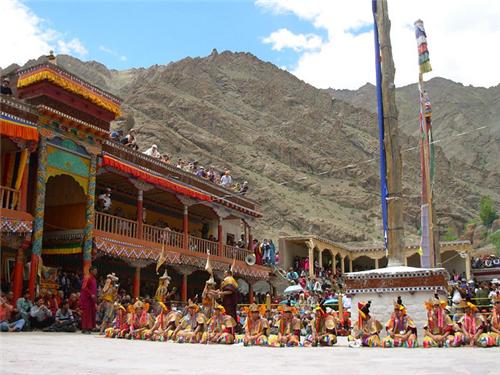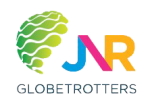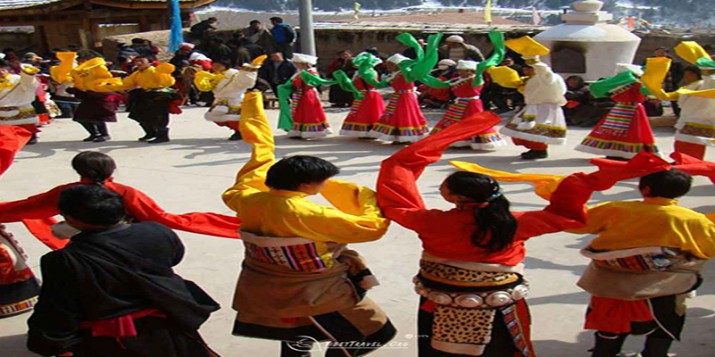Ladakh comes alive during festivals, when people from different corners of Ladakh converge at one place to celebrate and enjoy the festive spirit. Festivals are in fact the best way to get a feel of the Ladakhi culture.
Saka Dawa Festival
The Saka Dawa festival is celebrated on the 4th month of the Tibetan calendar. It is the most revered day for Buddhist followers as on this full moon of this month, the Buddha was born, attained enlightenment and then parinirvana. On this very day, every year, the lamas of nearby monasteries change the Tarboche flag pole, that is located at the South of the mountain, Kailash Kora. It is believed that if after the pole is changed, it does not stand erect, it is not auspicious by Tibetans. The festival is celebrated all over Ladakh.

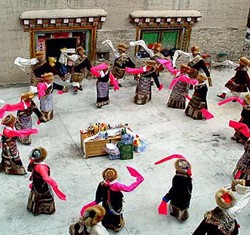
Sindhu Darshan Festival
Sindhu Darshan is celebrated in Shey Manla, located 8 kms away from the main city of Leh. This is a 3-day festival, which happens from 1st to 3rd June on the bank of Indus river. The celebrations of this festival were started in the month of October 1997, for the celebration of unity as well as communal harmony along with the national integration. There is also a symbolic salute to the brave soldiers of the country. At the time of the festival, the local artists from various parts of the country traditional dance performances. People from all religions, castes and regions become a part of this festival.
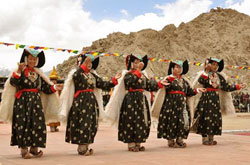

Yuru Kabgyat Festival
Yuru Kabgyat is a two-day festival that takes place in the month of July in the Lamayuru monastery, which is around 125 kms away from Leh. During the festival, the monks perform mask dances, prayers and rituals in order to get away from any kind of disaster and for bringing in peace in the world. This is a pre-historic monastery, which is called Yuru Gonpa by the locals. This festival is dedicated to Yuru Kabgyat and his mythical connection. This Gompa owes its origin to the Drikungpa branch of the Kagyudpa sect of the Tibetan Buddhism.
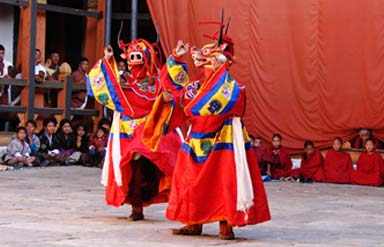

Hemis Festival
Hemis Gompa, the largest and richest Buddhist monastery in Ladakh plays host to the popular yearly festival day called Hemis Festival. The day has been declared as the state holiday. This 2-day festival is celebrated on the 10th day of the Tibetan lunar month and remembered as the birth of Padmasambhava, the founder of Tibetan Buddhism. During the festival, the locals get dressed-up in traditional clothes, where men wear cummerbunds and women wear vibrant headgears and loads of jewelry. The Lamas perform sacred masked dance, known as Chaam while they are accompanied by musical drums, long horns and cymbals. This is an extremely well-known festival. The most mysterious form of celebration are the mystic mask dances. The Mask Dances of Ladakh are referred collectively as chams Performance. Chams performance is a fundamental a part of Tantric tradition. Chams are performed only in the monasteries that practice Vajrayana teachings of Tantric Buddhism.


Ladakh Festival
Ladakh festival is celebrated from 20th to 26th September, every year in Leh and its villages. The inauguration ceremony of the festival takes place in Leh on a large scale with a procession of several cultural troupes from different part of the region which traverses through Leh Market. There is dancing, singing, traditional music, people wearing colorful traditional Ladakhi dresses. It comes to end at the Polo ground. The festival is for 6 days with regular celebration in various villages including archery, polo, and masked dances from the monasteries and dances by cultural troupes from the villages. There are musical concerts too.

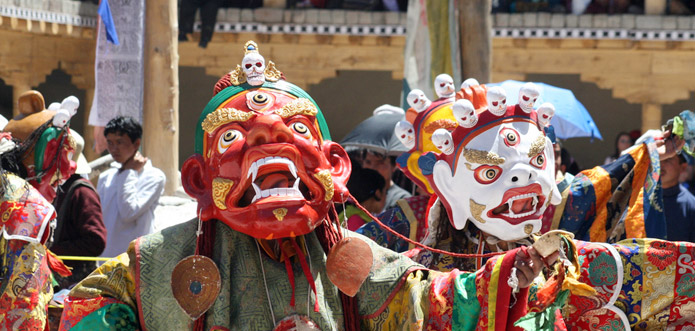
Thiksey Gustor Festival
Thiksey Gustor, is a 2-day festival celebrated in Ladakh. This festival is celebrated at various monasteries of Thiksey, Spituk and Karsha Nanzkar. The word ‘Gustor’ means ‘sacrificing the 29th date. During the festival, there are early morning prayers. After the festival is concluded, there is a distribution of the sacrificial cake, also known as the Torma during a ceremony called ‘Argham’ or ‘klling’. The leader of the Black Hat dancers does this distribution, marking the end of the festival and commemorating the victory of good over bad. There is also a re-enactment of the assassination of the traitor King Lang Darma of Tibet by a Buddhist monk during the mid 9thcentury.


Galdan Namchot Festival
The Galdan Namchot festival in Ladakh is celebrated for commemorating the birthday and the Buddhahood of the Tibetan saint-scholar, Tsongkhapa. He was the founder of the Gelukpa School that preaches Tibetan Buddhism during the 14th century. During the festival, all the monasteries, public and residential buildings are lit up. This festival means the starting of the New Year celebrations in Ladakh that goes on till the Dosmoche festival. During the festival, all kinds of traditional dishes are prepared such as vegetable and chicken noodle soup or thupkas, people visit their loved ones and eat meals together. People present ‘Khatak’, a traditional ceremonial scarf to each other.

